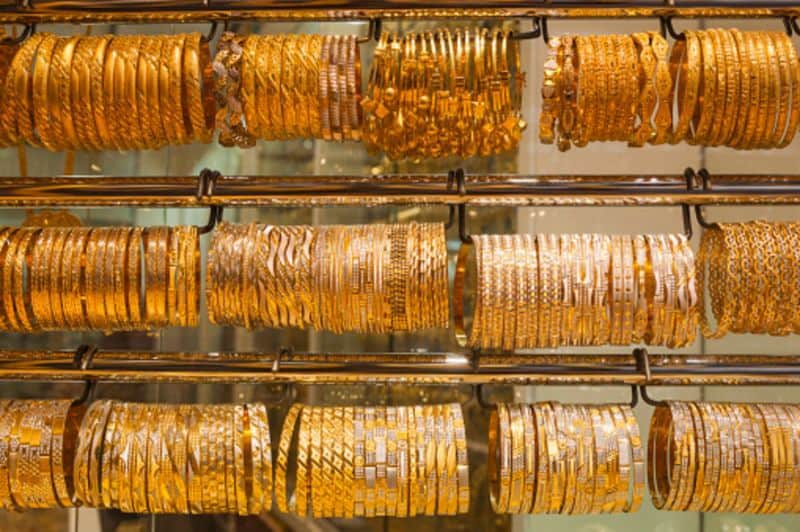Remember gold?
It seems like only six years ago the shiny metal was flavor of the month, hitting a record $1,900 a troy ounce while its backers prophesied the end of the fiat money system.
With bitcoin sucking up all the crazy in financial markets, gold looks to have lost its luster. The CBOE/Comex Gold Volatility Index, a rough proxy for the amount of fun and profit available for precious metal traders, touched a record low of 10.17 last month, from levels north of 37 back in 2011.
That may be overdue a change. Despite suffering its worst week since May last week, the outlook for gold could be stronger now than it has been for several months. Here’s why.
1. Interest rates
That may look like a typo, but it’s not. The received wisdom is that higher interest rates — like the U.S. Fed Funds rate hike expected Wednesday — are bad news for gold. That’s because tighter money tends to be accompanied by better bond yields and stronger earnings, highlighting commodities’ inability to produce income for investors.
The truth isn’t quite so simple. After all, spot gold was stuck around $1,060 an ounce two years ago when the U.S. Federal Reserve started lifting rates above their post-financial crisis level of 0.25 percent. At 100 basis points north of there, gold is trading around $1,248 an ounce.

Chart gold against U.S. 10-year Treasury yields and it looks distinctly like the metal tends to sell the rumor of rate rises, and buy the fact. Every time yields have peaked north of 2.5 percent over the past five years, gold has promptly rallied. Economists predict that yield barrier should be broken some time in the first quarter of 2018.
2. The seasons, they go round and round
As Gadfly has argued previously, gold exhibits a pronounced seasonality. January, February, July and August — the four months this year when the metal has rallied most strongly — had, on average, been the best months to buy gold over the previous 10 years.
That seems to relate to resurgent demand from bar, coin and ETF investors coinciding with the tail end of the Diwali-Christmas-Lunar New Year peak buying period for jewelry. Whatever the reason, it’s enough of a consistent pattern these days that it’s starting to become a self-fulfilling prophecy — traders’ beliefs have a way of driving their buy and sell orders, and ultimately the market.
3. What an unpleasant surprise
Gold is the downer at every economic party. When the good times are rolling, people would rather be punting their money on FAANGs or dragon-head stocks than a prehistoric metal that’s an emblem of miserliness. No wonder, with the global economy celebrating as it has been in 2017, bullion doesn’t have a dance partner.
Still, all parties must come to an end — and it’s worth reflecting on just how unexpectedly good things have been lately. Citigroup Inc.’s surprise index for data on major economies reached a reading of 49.5 last month, a level it hasn’t breached since 2010. Expectations eventually catch up to a run of positive surprises, leading to disappointment as consistently as hangovers follow too much celebratory drinking.
4. A bit of bad news
You didn’t think we’d make it through a whole column with only a passing reference to cryptocurrencies, did you?
Bitcoin’s wild gyrations could be the spark to set any of the above factors in motion. Given the similarities between the investment philosophies of gold bugs and bitcoin fanatics, it’s hard to escape the notion that the precious metal has been so somnolent precisely because so much of the hot money has been going into zeroes and ones.
It’s anyone’s guess when or why bitcoin fever will break, but at a time when the bosses of major brokerages are warning darklyof “a catastrophe in the cryptocurrency market,” it’s not impossible to imagine a disorderly retreat.
If that happens, many of the fiat-money brigade who’ve pumped up the value of digital currencies will switch quickly from bitcoin, to cash, to their perceived safe haven of gold. More sober investors also tend to cling to the metal in moments of panic such as Brexit and the election of Donald Trump.
Gold may be a barbarous relic — but relics are rarely more attractive to investors than when they’re trembling before the power of the market’s gods. Don’t count it out just yet.

